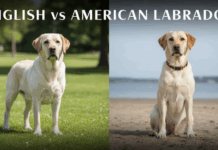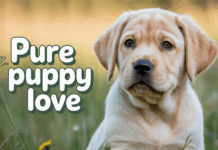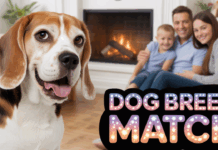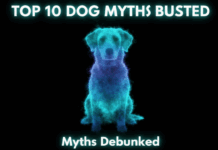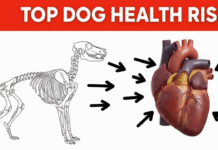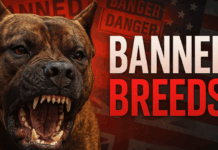Last Updated on May 3, 2024 by Dogs Vets
5 Essential Dog Grooming Tips: Keeping Your Pet’s Coat Healthy and Tangle-Free
Caring for your dog’s coat is crucial to their overall health and well-being.
In this comprehensive guide, we will explore 5 essential dog grooming tips that will help you maintain your pet’s coat in pristine condition, preventing tangles and promoting a healthy, vibrant appearance. Let’s dive in!
Introduction to Dog Grooming
Dog grooming is an essential part of responsible pet ownership. Not only does it help maintain your dog’s coat, but it also plays a vital role in their overall health, comfort, and happiness.
Grooming allows you to monitor your pet’s skin, nails, teeth, and ears for any signs of potential health issues. By following these essential dog grooming tips, you’ll be well on your way to providing the best care for your furry companion.
Choosing the Right Grooming Tools
Selecting the appropriate grooming tools for your dog’s coat type is crucial.
Different breeds have varying coat types, and using the right tools will ensure a thorough and comfortable grooming experience for your pet. Some essential grooming tools to consider include:
- Slicker brushes: Ideal for removing tangles and loose hair from medium to long-haired breeds.
- Bristle brushes: Suitable for short-haired breeds and dogs with smooth coats.
- Pin brushes: Perfect for dogs with long, silky, or curly coats.
- De-shedding tools: Essential for removing loose undercoat from breeds prone to shedding.
- Combs: Useful for gently removing tangles and mats, especially around sensitive areas like the face and paws.
- Grooming scissors or clippers: Necessary for trimming hair around the eyes, ears, paws, and tail.
Investing in high-quality grooming tools will make the process more efficient and enjoyable for both you and your pet.
Regular Brushing and Combing
One of the most important aspects of maintaining your dog’s coat is regular brushing and combing. This helps prevent tangles, remove loose hair, and distribute natural oils evenly throughout the coat, resulting in a healthy and shiny appearance.
Here are some tips for effective brushing and combing:
- Brush your dog’s coat at least once or twice a week, depending on their breed and coat type.
- Always brush in the direction of hair growth to avoid discomfort.
- Use gentle strokes and be mindful of sensitive areas like the ears, face, and belly.
- Pay special attention to areas prone to matting, such as behind the ears, under the legs, and around the collar.
- Reward your dog with praise and treats during the grooming session to create a positive association with the process.
Proper Bathing Techniques
Bathing your dog is an essential part of grooming, as it helps remove dirt, debris, and odors from their coat.
However, it’s important to use the correct techniques to avoid causing skin irritation or damaging their coat.
Follow these tips for a successful and stress-free bathing experience:
- Only bathe your dog as needed, typically once every 4-6 weeks, depending on their coat type and lifestyle.
- Always use a dog-specific shampoo and conditioner to ensure the products are gentle and pH-balanced for their skin.
- Thoroughly wet your dog’s coat before applying shampoo, using lukewarm water to prevent discomfort.
- Massage the shampoo into your dog’s coat, avoiding sensitive areas like the eyes and ears.
- Rinse thoroughly to remove all shampoo and conditioner, as residue can lead to skin irritation.
- Dry your dog with a clean towel or a hairdryer set on the lowest heat setting, taking care not to overheat or startle them.
Trimming and Haircuts
Regular trimming and haircuts are necessary for certain breeds with continuously growing hair, such as Poodles, Shih Tzus, and Malteses.
In addition to maintaining a neat appearance, trimming helps prevent matting and allows for better airflow to the skin. Here are some tips for successful trimming and haircuts:
- Familiarize your dog with the sound and sensation of grooming scissors or clippers before beginning the trimming process.
- Keep your dog calm and comfortable by offering praise and treats during the grooming session.
- Trim hair around the eyes, ears, paws, and tail regularly to prevent irritation or obstruction.
- Consult a professional groomer or breed-specific grooming guide to determine the best haircut style for your dog’s breed and coat type.
Maintaining Nail and Paw Health
Regular nail trims are crucial for your dog’s comfort and overall paw health. Overgrown nails can cause discomfort, affect your dog’s gait, and potentially lead to joint issues.
In addition to nail trims, it’s essential to check your dog’s paws regularly for signs of injury or irritation.
Follow these tips for proper nail and paw maintenance:
- Trim your dog’s nails every 3-4 weeks, depending on their growth rate and activity level.
- Use a dog-specific nail trimmer or grinder, and be cautious not to cut into the quick, which can cause pain and bleeding.
- Check your dog’s paws regularly for signs of injury, such as cuts, scrapes, or foreign objects lodged between the pads.
- Apply a paw balm or wax to protect and soothe your dog’s paw pads, especially during extreme weather conditions.
Ear and Teeth Cleaning
Maintaining your dog’s ear and oral health is an essential aspect of grooming.
Regular ear cleanings can help prevent ear infections, while routine teeth cleanings can prevent dental issues and bad breath. Here are some tips for proper ear and teeth cleaning:
- Clean your dog’s ears once every 1-2 weeks, depending on their breed and ear type.
- Use a dog-specific ear cleaning solution and cotton balls or pads to gently clean the outer ear canal.
- Brush your dog’s teeth daily using a dog-specific toothpaste and toothbrush.
- Offer dental chews and toys to help remove plaque and tartar buildup between brushings.
Addressing Common Skin and Coat Issues
Regular grooming allows you to monitor your dog’s skin and coat for signs of potential health issues, such as hot spots, dandruff, or fleas and ticks.
If you notice any abnormalities, consult your veterinarian for guidance on treatment and prevention. Early detection and intervention can help prevent further complications and ensure your dog’s overall health and comfort.
Professional Grooming Services
While at-home grooming is essential, there are times when enlisting the help of a professional groomer may be beneficial.
Professional groomers have the expertise and tools to address specific grooming needs, such as breed-specific haircuts, de-shedding treatments, or advanced grooming techniques.
Regular visits to a professional groomer can also provide valuable insight into maintaining your dog’s coat and overall health.
How to choose the Best dog clippers
To choose the best dog clippers, consider the following factors based on the information from the sources provided:
- Type of Clippers: Decide between professional-grade clippers for heavy-duty use and home-use clippers for occasional grooming sessions .
- Consider Your Dog’s Breed and Coat Type: Different breeds have varying grooming needs, so choose clippers that suit your dog’s specific requirements .
- Blade Length and Adjustability: Look for clippers with adjustable blade lengths suitable for your dog’s coat length .
- Ergonomic Design: Opt for clippers that are lightweight, easy to handle, and have an ergonomic design for comfortable grooming sessions .
- Noise Level: Choose clippers with a quiet motor to ensure a pleasant grooming experience for your dog .
- Maintenance: Select clippers that are easy to clean and maintain for longevity and optimal performance .
- Additional Features: Consider features like safety guards, variable speed settings, and noise-canceling technology based on your dog’s needs .
- Brand and Quality: Popular brands like Wahl, Andis, Heiniger, Oster, and Masterclip offer a variety of clippers suitable for different grooming needs .
- Budget: Determine your budget and choose clippers that fit your price range, starting with lower-priced options for beginners and upgrading as needed .
- Motor, Speed, and Durability: Look for clippers with a suitable motor type, speed settings, and durability to handle your dog’s coat type effectively .
By considering these factors such as type, breed, blade adjustability, design, noise level, maintenance, additional features, brand, budget, and motor speed, you can select the best dog clippers tailored to your dog’s grooming requirements.
Creating a Positive Grooming Experience
Establishing a stress-free and enjoyable grooming routine is crucial for both you and your dog. Here are some tips to create a positive grooming experience:
- Begin grooming sessions when your dog is young to help them become accustomed to the process.
- Offer praise, treats, and positive reinforcement throughout the grooming session.
- Keep grooming sessions short and focused, gradually increasing the duration as your dog becomes more comfortable.
- Create a calm and quiet environment for grooming, free from distractions or loud noises.
Conclusion
Proper dog grooming is an essential aspect of responsible pet ownership, contributing to your dog’s overall health, comfort, and happiness.
By following these 5 essential dog grooming tips and maintaining a regular grooming routine, you’ll help ensure your pet’s coat remains healthy and tangle-free, while also monitoring their well-being and preventing potential health issues.
FAQs
-
How often should I groom my dog?
The frequency of grooming sessions depends on your dog’s breed, coat type, and lifestyle. In general, it’s recommended to brush your dog’s coat at least once or twice a week, bathe them every 4-6 weeks, and trim their nails every 3-4 weeks.
-
Can I use human shampoo on my dog?
No, it’s essential to use dog-specific shampoo and conditioner, as these products are formulated to be gentle and pH-balanced for your dog’s skin. Using human shampoo can cause skin irritation and strip your dog’s coat of its natural oils.
-
How do I know which grooming tools are right for my dog?
Choose grooming tools based on your dog’s coat type and breed. Consult a breed-specific grooming guide or consult a professional groomer for guidance on selecting the appropriate tools for your dog.
-
Should I trim my dog’s hair at home or take them to a professional groomer?
Trimming your dog’s hair at home is possible with the right tools and knowledge, but enlisting the help of a professional groomer may be beneficial for specific grooming needs, such as breed-specific haircuts or advanced grooming techniques.
-
How do I make grooming a positive experience for my dog?
Begin grooming sessions when your dog is young, offer praise and treats throughout the process, and create a calm and quiet environment for grooming. Keep grooming sessions short and focused, gradually increasing the duration as your dog becomes more comfortable.
-
What should I do if I notice skin or coat issues while grooming my dog?
If you notice any abnormalities in your dog’s skin or coat, consult your veterinarian for guidance on treatment and prevention. Early detection and intervention can help prevent further complications and ensure your dog’s overall health and comfort.
-
How can I maintain my dog’s ear and oral health?
Clean your dog’s ears once every 1-2 weeks using a dog-specific ear cleaning solution and cotton balls or pads. Brush your dog’s teeth daily using a dog-specific toothpaste and toothbrush, and offer dental chews and toys to help remove plaque and tartar buildup between brushings.
Fact Check
We hope you enjoyed reading this article. What are your thoughts on the topic?
“At [Dogsvets.com], our goal is to bring you the most accurate and up-to-date information on all things pet-related.
If you have any additional insights or would like to advertise with us, don’t hesitate to get in touch.
If you notice any errors or discrepancies in our content, please let us know so we can correct them.
We welcome your feedback and encourage you to share this article with others.”


